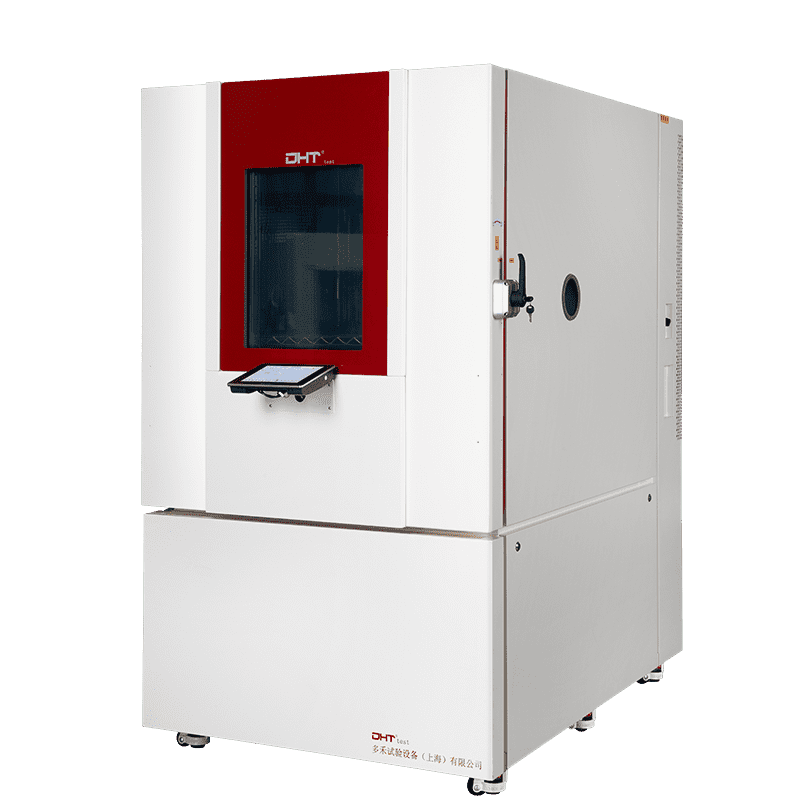Written by Robin
Senior Engineer, Doaho Test (DHT®)
Explosion-Proof Testing: The Cornerstone of Battery Safety Validation
As new energy technology accelerates, power batteries have become the core of electric vehicles—and their safety now directly determines both vehicle reliability and consumer trust. In recent years, a surge in thermal runaway incidents has served as a stark reminder: the only way to ensure real-world safety is to test batteries under the harshest, failure-inducing conditions. Explosion-proof test chambers are the strategic foundation that make this possible.
The Inherent Risk of Battery Testing
Lithium-ion batteries are highly sensitive to abuse conditions. Under thermal stress (>150°C), overcharging (≥1.5x rated voltage), or mechanical damage like puncture, they can enter a chain reaction of heat release, resulting in fires or explosions.
With the growing adoption of 800V high-voltage systems and energy densities exceeding 300Wh/kg, the thermal stability margin of battery cells continues to narrow. In labs, destructive tests like UN38.3 T4 thermal shock and GB 38031 nail penetration are designed to intentionally trigger failures. If not properly contained, a single event can release shockwaves exceeding 10kPa and flame jets surpassing 1500°C—posing life-threatening risks to both personnel and equipment.
More Than a Steel Box: A Multilayered Defense System
Explosion-proof chambers aren’t just reinforced boxes—they are engineered safety systems integrating explosion mitigation, intelligent monitoring, and emergency response.
Key Capabilities Include:
-
Early Risk Detection & Prevention Equipped with VOC sensors and infrared imaging, the chamber can detect warning signs of thermal runaway (e.g., electrolyte off-gassing) and automatically activate an inert nitrogen purge to suppress combustion before it occurs.
-
Accurate Reproduction of Explosive Conditions Designed to meet the explosion containment requirements of UL 2580 §14.3 (overcharge) and IEC 62660-2 (internal short circuit), ensuring reliable, traceable test results.
-
Structural Impact Resistance Built with a hybrid armor shell (SUS304 + Q235B), optimized via finite element analysis to withstand 20kPa shock loads. A rupture disk valve provides 5ms overpressure release to preserve structural integrity.
-
Automated Emergency Response Integrated with FM-200 fire suppression and negative-pressure ventilation, the system reduces internal oxygen concentration below combustion thresholds within 60 seconds.
Critical Test Scenarios That Require Explosion-Proof Chambers
-
Thermal Abuse (150°C–200°C): Flame jet risk exceeds 85%, requiring fire-containment capabilities.
-
Nail Penetration (Φ3–8mm steel needle): Instantaneous temperatures over 800°C; melt splash must be contained.
-
Overcharging (2C–5C current rates): Gas expansion can reach 300% volume, demanding explosion-proof structure to prevent rupture.
Note: According to GB/T 31467.3 and SAE J2464, these tests must be conducted inside an ATEX-certified explosion-proof enclosure.
Risk Management Across the Entire Battery Lifecycle
-
In R&D: Quickly identify the thermal runaway threshold, cutting development time by up to 40%.
-
On the Production Line: Prevent a single cell failure from damaging million-dollar testing equipment.
-
During Certification: Comply with TÜV and other global bodies’ safety audit requirements.
-
For Branding: Demonstrate a “zero testing incident” record and a strong commitment to safety.
Final Thoughts: Safety in the Age of High Energy Density
As the industry races toward 1,000km range and 4C fast charging, explosion-proof test chambers quietly uphold the invisible line between performance and safety. They are more than lab equipment—they are a physical expression of corporate responsibility and technical integrity.
Adopting a solution that complies with ISO 80079 standards is not just a regulatory requirement—it’s a vital step toward building a truly sustainable and trustworthy battery industry.
If you’d like to learn more about the technical specifications, application cases, or customized solutions for explosion-proof test chambers, feel free to contact DHT®. Our experienced engineering team will provide tailored product recommendations and comprehensive technical support based on your industry needs—helping you conduct high-risk testing efficiently and safely.


